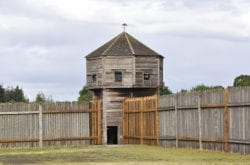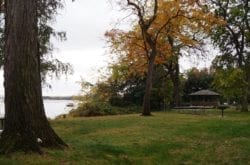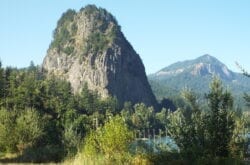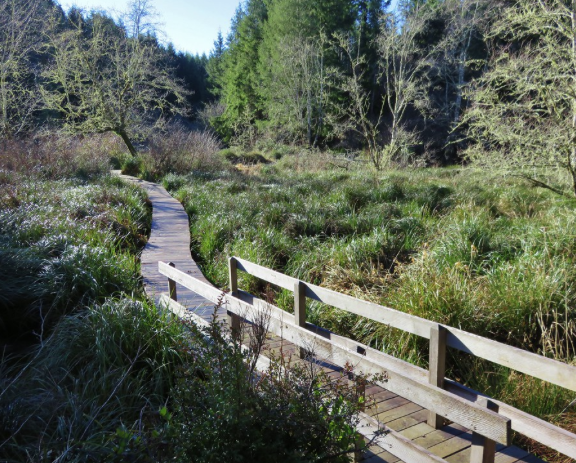
Imagine yourself camping in the woods. You are not in a campsite with running water, a cart riding around selling firewood by the bundle, and a private shower stall. You are in the backcountry – forging a new trail into an unfamiliar land. The weather turns bad and you are forced to stay in place for months. For what became known as the Lewis & Clark Expedition or the Corps of Discovery, they had only partially completed their mission. They had trekked all the way west to the Pacific Ocean. The only problem with making a long road trip in one direction is that you then have to turn around and head back home. No doubt they were more than ready to be back home, but were forced to build an encampment in Astoria while they waited out winter.

Winters in Astoria do not usually bring much snow and can be quite different from the winters they had left back home. Winter can bring plenty of rain and gray, cloudy, foggy weather, but are relatively mild. In their journals, the men discussed the weather as well has how they survived the time with the help of the local native population, the Clatsop Indians.

Once they had built their small encampment, the explorers would spend most of their days hunting and gathering food. The site of their encampment sits in the forest inland, and was not exactly ocean-front property with a view. Astoria sits on a peninsula-shaped corner at the very NW tip of what is now Oregon and where the mighty Columbia River meets the Pacific Ocean.
The Fort to Sea Trail
You can also travel that path of history by hiking the 6.5 mile trail that recreates the most likely path the explorers would have followed. Just like the Lewis & Clark expedition, remember it is 6.5 miles one-way, so plan on the time for the return journey. You will see the varied landscape that the Corps also saw and documented – the native landscape along the trail is much the same as it has always been. It is not an easy hike but well used by hikers and runners. There are sections that involve clambering up and down hills, and traversing slippery sections (the bridges when wet are slick.) The landscape you will see includes vistas, boggy marshes, sand dunes, and deep forest. After immersing yourself in the 19th century and walking in the footsteps of Sacajawea, at the end of the trail you do have to return to the 21st century by walking through a tunnel underneath Hwy 101 to reach the expansive wide open Sunset Beach. Relax and enjoy the view and imagine how thrilling it must have been for Sacajawea who had never seen an ocean before. See the entire hike through their eyes and you will appreciate it all the more.
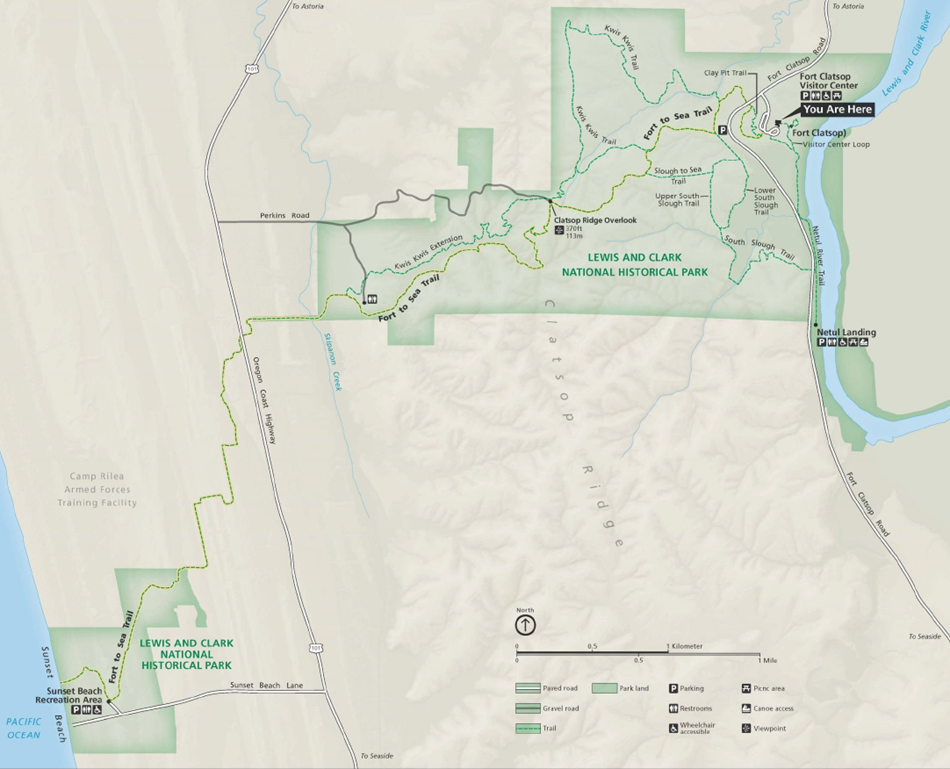
Details:
- The hike is not wheelchair accessible and may not be appropriate for those with walking disabilities
- There are bathrooms located at the trail head, at the half way point, and at Sunset Beach.
- Leave no trace: There are no trash cans along the route, so plan on taking everything back with you.
- There are no water fountains – so bring your own water and snacks.
- There is an entrance fee you pay at Fort Clatsop – $10 ages 16/over
- At the overlook point, there is a picnic bench and place to sit.
- Open dawn to dusk all year long.
- Dogs are allowed on a leash

